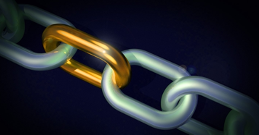Why Make the Investment In An ERP System?
Chief Executives and C-suite leaders are faced with more challenges and investment requirements than they have resources to meet them. New...
2 min read
 Todd Hass, MBA, SCOR-P
:
Mar 28, 2023 9:43:00 AM
Todd Hass, MBA, SCOR-P
:
Mar 28, 2023 9:43:00 AM

Trying to predict and plan for every type of world pandemic is a practice that some larger organizations might say they are routinely exploring with multiple “what-if” scenarios being played out on their existing supply chain network design, however, for mid-market organizations, this may not be practical. The amount of resources and time spent to predict every supply chain disruption is not a realistic expectation with the limited resources that normally exist in mid-sized markets.
So what is a more pragmatic approach? Start by determining WHEN to focus and WHERE it makes the most sense for your business to start exploring.
Changes within the political, environmental, social, technological, legal, or economic (PESTLE) climate that impact a specific key part of the business are a great opportunity to increase focus on resilience. These changes occur daily, so focusing on every change is not going to work, but using the PESTLE approach to identify when to bring more resources to the conversation is a great place to start.
Coupling together the severity and probability of the risk with PESTLE will help prioritize where the focus is needed first. Remember, the key point is determining when to increase visibility, communications, planning scenarios, and so forth. Learning to know when to focus is a good place to start, but the first priority should be identifying where to focus and what questions to consider.

Introducing new technology, such as a new Enterprise Resource Planning (ERP) platform to better manage the everyday challenges of delivering the highest level of value for the least amount of cost internally, is something that should initiate additional communication and focus within a team. The communication frequency should escalate and key organization indicators should be watched closely. When monitoring an organization end to end, it can be difficult to determine where to place the additional focus once the need is known.
Some might utilize the impact on sales volume, revenue, and total costs to drive more of the team’s focus. Others might look at it more from a people, process, and technology standpoint. However you choose to strategize is up to your specific business, but the important thing is to start strategizing before the storm. If an organization’s supply chain risks are not evaluated routinely, typical volatility within the economy goes unnoticed until a problem becomes too large to overlook and be prevented.
Contact KnowledgePath today for assistance finding the right ERP for your Supply Chain environment.

Chief Executives and C-suite leaders are faced with more challenges and investment requirements than they have resources to meet them. New...

Now that KnowledgePath has joined forces with RubinBrown, we are the largest consulting firm focused on the Mid-Market. This change has brought...

You hear a lot of talk these days about sustainability, most of it in the areas of agriculture and natural resources. But have you given...